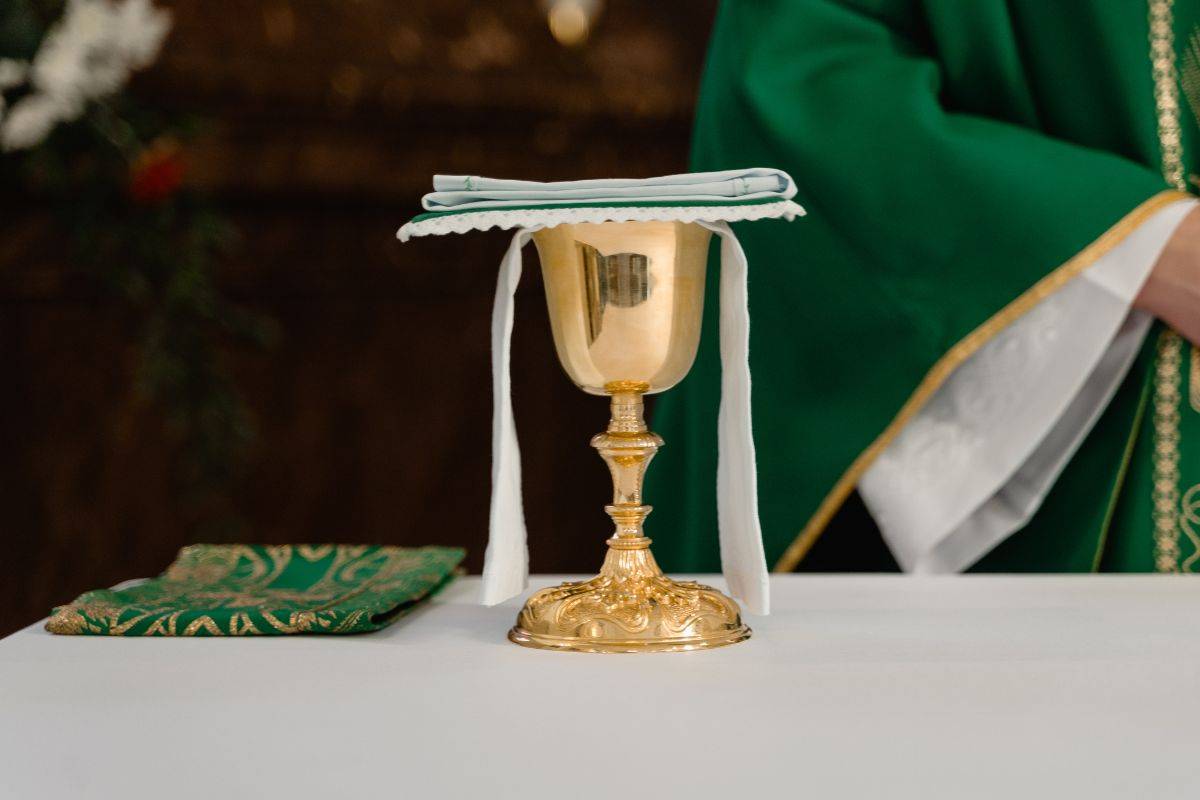
18-10-2023
Curiosity
How is the chalice prepared for the Holy Mass?
Let us look together at the ritual preparation of the chalice and what its main characteristics are. A key feature? The cup plated with a precious, non-absorbent material such as gold.
Among the main liturgical supplies that the priest uses during a Holy Mass, other than the ciborium or paten, is the priestly chalice. During the holy celebration, a deacon prepares the goblet by covering it with a veil, and then moves it to the altar, placing the sacred object generally directly on a corporal. A few moments before the communion, the Holy Mass wine, Jesus' blood, is poured out and raised in front of the faithful. This represents a special moment of union between God and man. It is always here that the celebrant subsequently pours in a drop of water while reciting almost in a whisper, a brief ritual formula.
